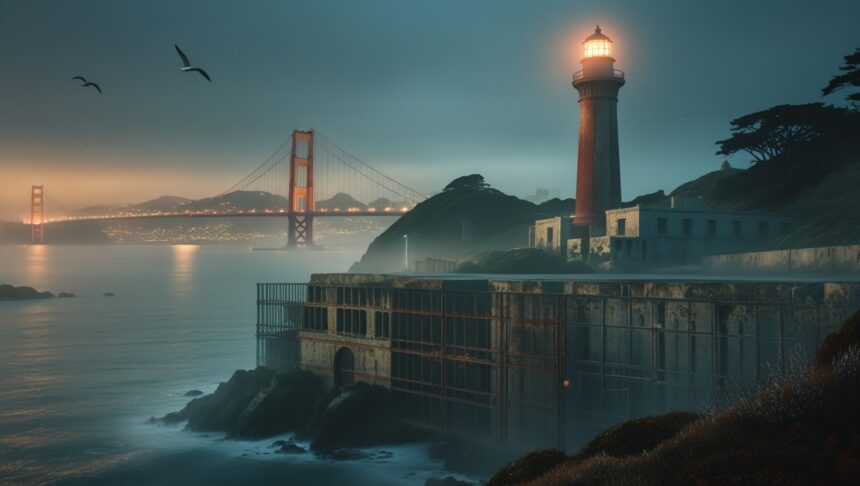In a dramatic weekend post on Truth Social, President Donald Trump announced he is ordering the Bureau of Prisons—alongside the Justice Department, FBI, and Homeland Security—to rebuild and reopen Alcatraz as a maximum‑security site for “America’s most ruthless and violent offenders.”
“We will no longer be held hostage to criminals, thugs, and judges that are afraid to do their job,”Trump declared, calling a revamped Alcatraz a powerful emblem of “Law, Order, and JUSTICE.”
From “The Rock” to a Fortress Once More
Alcatraz Island, perched off the coast of San Francisco, served as a federal penitentiary from 1934 until its 1963 closure when soaring costs made it nearly three times more expensive to run than any other prison. Restoring the crumbling cells alone is estimated at $3 million to $5 million, not counting staff, security upgrades, or day‑to‑day operations—figures that once doomed its original reincarnation as a prison.
Today, Alcatraz is a beloved National Park Service site attracting 1.2 million visitors a year. It’s been protected as a National Historic Landmark since 1986, though that status can be revoked if the island’s historic characteristics are lost.
“Just an Idea” Fueled by Frustration
Back at the White House on Sunday, Trump framed the plan as a spur‑of‑the‑moment reaction to what he called “radicalized judges” insisting on due process for every migrant facing deportation. “That would mean millions of trials,” he told reporters, suggesting Alcatraz would relieve the overload on America’s courts. Yet experts say reopening the island would require congressional approval, massive reconstruction, and complex environmental and historic‑preservation reviews.
A Storm of Pushback
No sooner had Trump’s post gone live than critics spoke out:
- Nancy Pelosi, whose San Francisco district includes Alcatraz, dismissed the proposal as “not a serious one.” On X, she reminded followers that Alcatraz has thrived for decades as a national park and tourist icon.
- Legal scholars warn that housing inmates on an isolated island raises constitutional questions about access to counsel and appeals.
- Budget hawks in Congress are skeptical about funneling tens of millions of dollars into a prison that once cost far more than it was worth.
A Family Echo from Trump Jr.
Interestingly, Donald Trump Jr. floated the same idea on social media years ago—just days after his father’s second inauguration—when White House plans to send migrants to Guantánamo Bay dominated headlines. “Maybe we should also reopen Alcatraz?!?!” he wrote, illustrating that the notion has long lingered within the Trump orbit.
What It Could Take to Turn Idea into Reality
- Funding: Congress must appropriate restoration and operating budgets—likely well above the original $5 million estimate once modern security and living‑condition standards are factored in.
- Legislation: Lawmakers must amend or repeal parts of the Historic Sites Act if Alcatraz is to lose its landmark protections and revert to a prison.
- Local Buy‑In: San Francisco officials, tourism operators, and the National Park Service would need to negotiate leases, ferry services, and environmental impact plans.
- Legal Safeguards: A new Alcatraz prison would require courts to ensure inmates’ rights, including trials, appeals, and attorney visits—ironically the very due‑process debates that spurred Trump’s idea.
The Political Undercurrents
Trump’s call taps into his core theme of “tough on crime” and an impatient respect for procedure. Yet it also sharpens divisions over executive power: opponents see it as a stunt to rally his base, while supporters view it as a no‑nonsense solution to legal gridlock.
Looking Ahead
For now, Alcatraz’s cells remain empty. The plan faces steep obstacles—from securing billions in funding to navigating historic‑preservation laws. But one thing is clear: by invoking The Rock, Trump has reignited debates over criminal justice, presidential authority, and the limits of political theater. Whether Alcatraz ever houses inmates again will depend on a complex dance of Congress, courts, and community leaders—and on how seriously America takes the president’s explosive proposal.
Read Also: Trump’s Tariff Chaos Forces European Auto Giants to Ditch Financial Guidance






